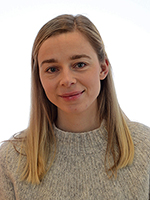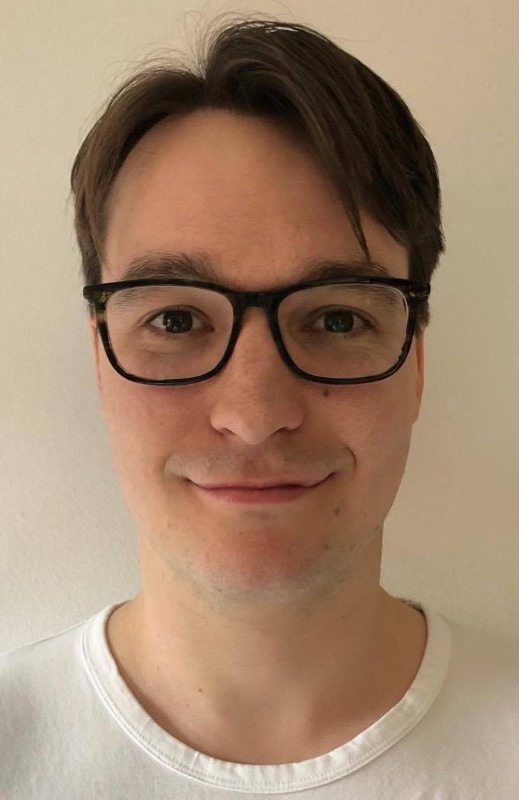Tidlegare arrangement - Side 59
Welcome to seminar by Omer Faruk Kuzu (Researcher, Saatcioglu Group, BMB, IBV).
Dr. Boris Lenhard, Professor of Computational Biology at the MRC London Institute of Medical Sciences and Imperial College London, UK, will present his research on "Promoter architectures and responsiveness to enhancers in long-range developmental regulation."
Shedding light on the extent and patterns of spurdog (Squalus acanthias) bycatch in the Norwegian coastal fisheries
Tittel: Mixed Integer Linear Programming Formulations For A Resource Constrained Project Scheduling Problem Comparisons And New Approaches
Deployment of semi-unsupervised learning in the search for new physics at the LHC with the ATLAS detector
I will show you who are the members of the Physics Education research group of the University of Bologna. Moreover, I will tell you about the projects in which we are involved now and all the past significnt projects that have helped to strengthen the direction and current identity of the group. Also I will indicate what are the main publications that have been made in these years.
All this will be done through the eyes and the narrative of a PhD student part of UNIBO research group. I have not certainly the presumption to know exactly (after two years) how to orient myself in all the rich and multi-dimensional research activities of my group. But I will try to make you perceive the great commitment, thoughts and enthusiasm that I see every day in the challenging but wonderful research activity in Bologna.
Localized Mixed States
Application of Supervised Machine Learning to the Search for New Physics in ATLAS data
"Searching for stellar emission in the sub-THz bands"
Changes in firn properties and meltwater retention on Austfonna ice cap, Svalbard, based on observations and model simulations
A wireless ultrasonic positioning network using off-the-shelf devices
Mapping fish diversity in the Oslo fjord by combining eDNA and citizen science
Tittel: Strukturen til Dobbelt Stokastiske Matriser
The Numerical Methods in Quantum Chemistry workshop will take place June 5-8 2023 in Tromsø.
The ichthyotoxic algae Chrysochromulina leadbeateri – an investigation into favorable conditions for growth and toxicity
Hylleraas seminar, hosted in Tromsø
Characterization of the angular and temporal response for an event-based asynchronous sun sensor
Tittel: Strøm i nettverk og transportmatriser med bestemte strukturer
Welcome to our GEOHYD Lunch Seminar Friday 2nd of June @ 12:15 in Aud. 2, Geology building or via videolink using Zoom. The seminar is helt by Holger Lange (NIBIO).
The human brain has no lymphatic vessels, so how does the brain clear metabolic waste? In 2012, Iliff et al. proposed a theory about waste clearance of the brain, called the "glymphatic" theory. The theory suggest that the waste clearances is bio-mechanical, and that impaired clearance may be the cause of some neurodegenerative diseases and disorders. The inaccessibility of the human brain have been a hurdle in the research, as experiments on rat brains do not translate to the human brain. Researchers at Oslo university hospital Rikshospitalet have shown clearance using tracers visible in magnetic resonance images (MRI). However, the MRI only provide snapshots of different states in time, therefore computational modeling is needed to fill in the gaps. In this presentation, we will look at computational modeling with the MRI to infer material parameters in the brain.
Doctoral candidate Lene Maria Sundbakk at the Department of Pharmacy, Faculty of Mathematics and Natural Sciences, is defending the thesis "Benzodiazepines and z-hypnotics in pregnancy and child neurodevelopment - With focus on causal inference methods in perinatal pharmacoepidemiology" for the degree of Philosophiae Doctor.
Mats Ola Sand, Ph.D. student at Rosseland Centre for Solar Physics, University of Oslo.
Predicting Frictional Properties of Graphene Kirigami Using Molecular Dynamics and Neural Networks
When hungry meets harmful: investigating the toxic relationship between haptophytes and copepods
Stalagmites grow on the floor of caves by precipitation of calcium ions found in the residual water film covering the top of the stalagmite, which is progressively drained away. Drops dripping from stalactites ensure the renewal of these ions.
Previous models of stalagmite growth assumed that drops fall on a straight vertical line from stalactites. Through high-speed imaging during field experiments in caves, we however observe that the impact point position of the drops is scattered. Using a Langevin-like equation to describe the fall of drops in response to gravity and aerodynamic forces, we then propose a prediction of the impact point dispersal. We show that measured stalagmite widths are correlated to the impact point dispersal of the drops.
In a second time, we focus on the mixing of calcium ions between the drop and the film during impact. The drop produces a crown when impacting the film, accompanied by a large amount of secondary droplet ejections. This is at the very heart of the film thickness variability post-impact. We record high-speed imaging of drop impacts on films of controlled thickness in a lab environment and assess the mixing between the drop and the film. We deduce how much liquid coming from the initial drop remains in the film.







